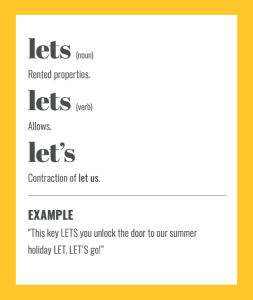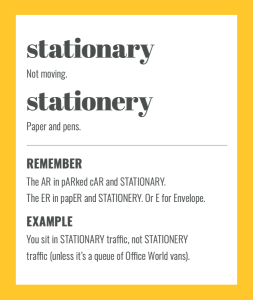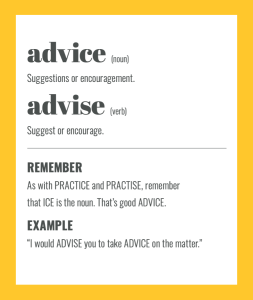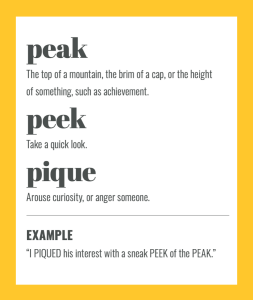Lets vs let’s: simple tips to remember the difference
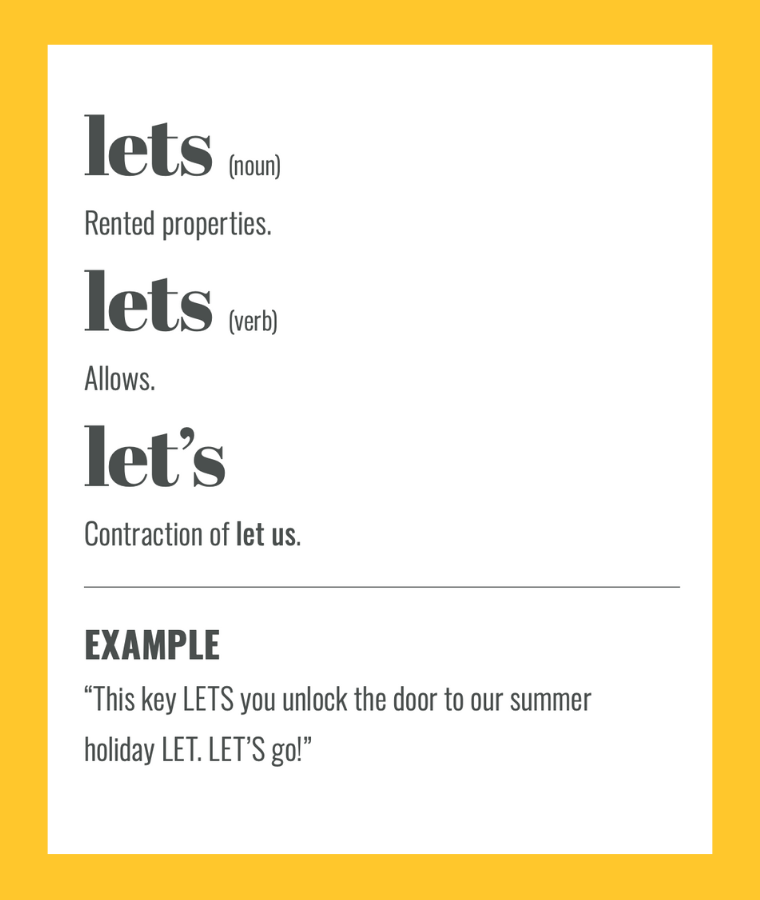
Do you know when the word LETS needs an apostrophe and when it doesn’t? Let’s take a look at the difference (see what I did there?).
When to use LETS without an apostrophe
LETS and LET’S both have the same root word: LET, which means allow, or permit.
Without the apostrophe, LETS is the third-person singular present tense form of the verb LET.
Use it in sentences where LETS can be replaced with either ALLOWS or PERMITS.
For example:
The key LETS you unlock the door.
The app LETS you meet new people.
When to use LET’S with an apostrophe
LET’S with an apostrophe is a contraction of two words: LET and US.
Use it when you’re encouraging someone to do something.
For example:
LET’S go to the pub.
LET’S buy a drink.
LET’S do it.
LET’S go!
Of course, if you want to sound more formal, you might prefer to use LET US.
LET US go to the park.
Worth knowing…
The word LETS can also be used in a property sense (real estate, if you’re using American English) to describe a rented property.
For example:
The agent handles a number of property LETS in the local area.
Get more tips in The Little Book of Confusables
Stationery vs stationary: simple tips to remember the difference
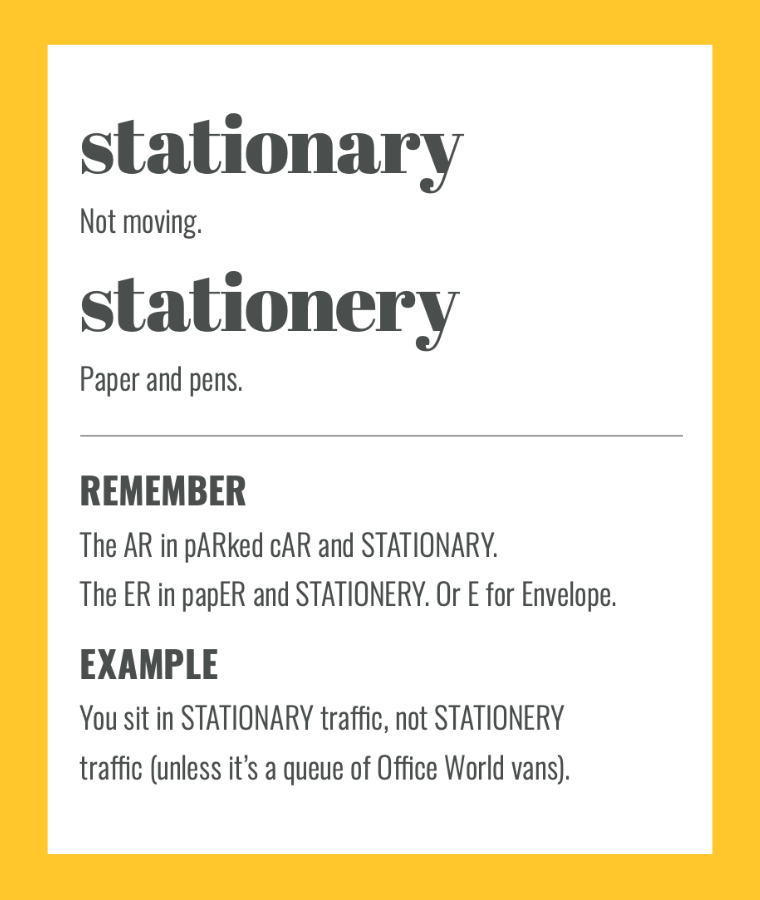
STATIONERY vs STATIONARY: which is which? Tips and tricks to remember the difference
STATIONERY and STATIONARY are commonly confused – and often by people who really should know better. I’ve seen graphic designers and printers offering ‘eye-catching STATIONARY’ more times than I care to remember – most recently in a glossy brochure promoting the services of a Gloucester-based design agency.
It makes me cringe – and I’m not the only one. So, here’s a simple tip to help you remember the correct spelling every time.
STATIONERY is a noun that means the tools used in offices, or for writing – paper and pens, in a nutshell.
You can remember E for Envelopes, or ER in papER.
For example:
“I used to love going back to school after the long summer holidays. It was always a good excuse to buy new STATIONERY.”
STATIONARY is an adjective used to describe something that’s still, or not moving.
Remember the AR in pARked cAR.
For example:
“Sorry I’m late – I was stuck in STATIONARY traffic.”
“Sorry I’m late – I was stuck in STATIONERY traffic” makes no sense. Unless it was a queue of Office World vans.
I hope this simple tip helps you remember the difference between STATIONERY and STATIONARY.
Get more tips in The Little Book of Confusables
Advise vs Advice: top tips to remember the difference

ADVISE vs ADVICE: do you know the difference?
ADVISE and ADVICE are easy to confuse. The fact that they look so similar trips people up time and time again.
Here are my simple tips to remember the difference between ADVISE and ADVICE.
ADVISE is a verb that means suggest, encourage or tell someone to do something.
“I ADVISE you to learn the difference between ADVISE and ADVICE.”
ADVICE is a noun.
The best way to remember this is that it ends with ICE, which is also a noun:
“That’s good ADVICE.”
Understanding the difference between the ISE and ICE endings can help you to remember the spellings of other similar word pairs.
Think DEVISE (verb) and DEVICE (noun), or PRACTISE (verb) and PRACTICE (noun).
(Note that the latter applies to the British English spelling only – US English has its own rules.)
Get more tips in The Little Book of Confusables
Peak, peek or pique: simple tips to remember the difference

Peak vs peek vs pique: do you know the difference? These tips will show you how to use these commonly confused words.
Years ago there was an account on Twitter that automatically responded when people spelled ‘sneak PEEK‘ as ‘sneak PEAK‘.
I’m kinda disappointed it no longer exists (changing the world, one spelling tweet at a time is right up my streat… sorry – street).
But there’s no doubt these tricksy spellings are easy to confuse. Here are my top tips to remember the difference between PEEK and PEAK… with PIQUE thrown in for good measure.
When to use PEAK
It’s easy to remember that the PEAK is the top or pinnacle of something. Just think of the A being like the top of a mountain.
When to use PEEK
A PEEK is a cheeky glance (or peep).
Think of the two EEs in CHEEKY, and the two EEs in PEEK – or like two eyes peeping.
When to use PIQUE
PIQUE means to arouse curiosity, or to make someone angry.
You might do something in a fit of PIQUE, but never ‘a fit of PEEK‘ or ‘a fit of PEAK‘ – though you need to be fit to climb a PEAK (sorry – couldn’t resist).
Get more tips in The Little Book of Confusables
Fun, memorable spelling and usage tips for 600 commonly confused words, packed into 300+ gorgeous pages for just £11.95. You’ll wonder how you managed without it!
2023 GOLD award winner at the eLit book awards.


